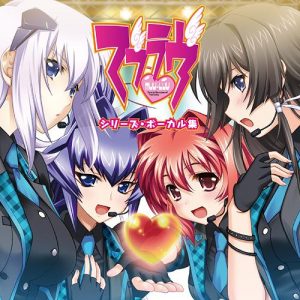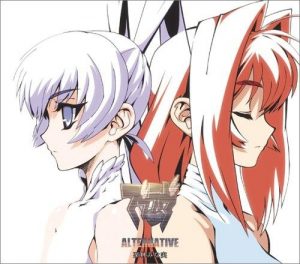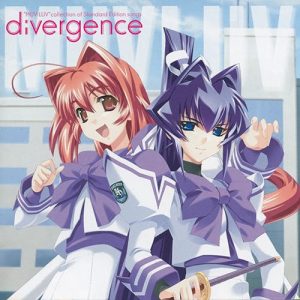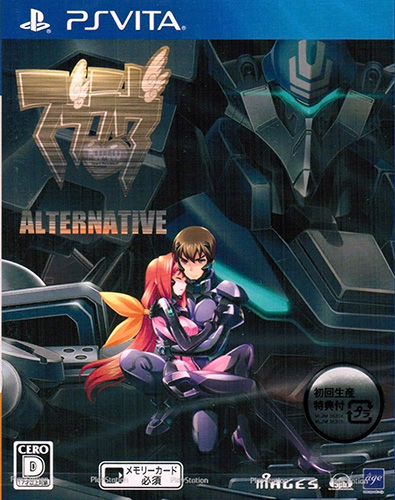
Muv-Luv: Alternative plays with its structure, creating a deeper connection to its protagonist and message about humanity. Through its execution, Muv-Luv tells a story gripped by a cruel truth, supplemented with a biting critique and self-awareness.
As a story, it ventures inwards, exposing the fears that play with our decisions. Bearing the past on its shoulders, Muv-Luv teaches a crucial lesson: to decide one’s future by fear is to relinquish choice.
In the previous article, I described the conventions from which Muv-Luv borrows, connecting briefly to the idea of a Hero’s Journey. In this article, I will dive further into that classic story structure, providing terminology and explanations as needed. By doing so, I hope to reveal the craftsmanship of the story and highlight the true beginning of the protagonist’s journey.
Context: Structure & Hero’s Journey
Joseph Campbell is an influential American Professor of mythology and religion. In his book, The Hero with a Thousand Faces (1949), Professor Campbell compared multiple mythologies across different cultures. In his findings, he noticed common features across cultural myths, resulting in his theory of a universal story template, the monomyth, or as it’s commonly known, the Hero’s Journey.
The Hero’s Journey is a classic story structure found in multiple genres, mediums, and cultures. In the Hero’s Journey, the protagonist (the hero), undergoes a journey where he/she ventures away from their familiar world, faces adversity, and triumphs, changing both their external and internal world forever. A few examples of this story structure would be Lord of the Rings, Star Wars, the film Rocky (1976), and, as we will discuss, Muv-Luv: Alternative.
Joseph Campbell’s theory, while critiqued amongst his fellow academics, went on to influence artists and writers, eventually permeating into lectures we heard from even high school and college professors. For this article, we will refer to the screenwriter Christopher Vogler and his book: The Writer’s Journey (2007).
In this book, he further defines characteristics of the Hero’s Journey into 12 stages. Of these stages, we will only be defining them as necessary. These stages, while important in a Hero’s Journey, are not all required or in a specific order. With this context, let’s venture into Muv-Luv: Alternative.
Before the Fall: The Reason for the Inward Journey
On December 10, 2001, the UN Forces start trials for the XM3, a revolutionary TSF Operating System that would aid the war against the BETA. However, in what would later be called the Yokohoma Base Incident, the BETA launches a surprise attack, resulting in the deaths of multiple soldiers.
During the aftermath, Takeru is devastated. Despite his expertise with the new OS, he failed to conquer his fear, endangering his allies and himself in the process. His shoulders slumped, he sits near the ruins of the battle, chastising his former hubris.
A teacher in his own world, his mentor and drill sergeant in this, Marimo arrives. Once more—and for the last time—she provides him comforting advice. Turning around to see her, he’s about to express his thanks. However, instead of seeing her face, he sees what’s left of it. “Reality” sinks its teeth in deep.
Traumatic Loss and a Heartless War
Marimo dies brutally.
The manner in which she dies is so painfully vivid that, within the Muv-Luv community, it’s not rare that readers share Takeru’s emotions; social isolation, self-destructive behavior, anxiety, heightened reactions, depressed mood, mistrust—these are but some of the symptoms of post-traumatic stress disorder.
Without disrespect or exaggeration, I believe the author purposefully invoked these feelings within the player. Contextually, all through Extra and Unlimited, the reader never once experiences direct conflict with the BETA. Even though Takeru does—our perspective into this world—it’s done so offscreen and he even forgets, a plot point that implies his death after Unlimited’s ending.
Up until now, the core characters would miraculously survive. The only real battlefield was the 12/5 Incident, a war amongst humans. Although we do see deaths, it’s depicted in a way that honors their passing both in ceremony and in conflict. Thus, when Marimo dies without provocation, it’s as if the story is saying:
“This is reality… and we were always blind to it.”
Stages of the Journey: Purpose of the Mentor and Ordeal
The Hero’s Journey is physical, emotional, and mental. The journey represents a character’s development, framed through multiple stages. Of these stages, one of the crucial steps is called “Meeting the Mentor.”
In this stage, the hero needs a guide, a physical being, an object such as a map, or even a strong “inner mentor” such as a code they must follow. The mentor helps the hero navigate the perils of their journey, teaching them lessons so that one day, the hero will no longer need the mentor—they will have embodied the lessons taught and trained for what’s to come.
And what’s to come is “The Ordeal,” a life-altering crisis, a do-or-die moment, is where the hero must face their greatest fear. It is here that the hero experiences a symbolic death, allowing them to be reborn. The hero themselves may taste death or even be the cause of an ally or mentor’s death. Once the ordeal has started, there is no going back.
A Return to One’s Roots: a Premature Homecoming
But even so, Takeru does just that.
In the Hero’s Journey, the protagonist usually has a homecoming, a return once the story’s problem is solved. However, Takeru’s return home is premature.
After Marimo’s death, he develops PTSD. Overcome by guilt, he makes rash decisions.
At this point in the story, Yuuko has developed an experimental device that allows Takeru to travel back to his homeworld (Extra). Prior to these events, the device was still being tested. Takeru refuses advice from Yuuko—who explicitly warns him not to think about this world—and damages his relationships with multiple characters.
Takeru denies reality, both metaphorically and literally. His emotions eat away at him. Instead of confronting them, he goes back to his “roots,” his escapist mindset, his denial of his current world, returns. Instead of embodying the lessons of his mentor, he forgets them. Instead of facing his fears, he runs away.
Eventually, Takeru gets what he wants, and he’s transported home. However, it’s clear that Takeru isn’t all there. While he’s physically back, his mind wanders constantly back to Marimo’s death. His trauma brings out the worst of his character, shocking his friends and even himself.
Yuuko’s warning was explicit, but Takeru wasn’t in the right mindset. By thinking too much about the other world, he actualizes it at home. Takeru’s “specialness,” his existence, bends reality, creating an irregular connection between his home and the world of Alternative.
The very thing people praised about him is now a curse, mocking him at his every turn. Once more he relives Marimo’s death, but this time, he can’t escape from it.
Dangers of Escapism: Refusing the Call
Changing our perspective can prove insightful. From the view of an author, a protagonist has several responsibilities. They are the center of the story, and thus a crucial perspective. Depending on how reliable their perspective, authors can filter our understanding of the world, requiring readers to be critical of events interpreted by the protagonist.
A protagonist must be proactive then, doing otherwise denies readers a better understanding of the setting and characters. In the structure of a Hero’s Journey, this is called the “Refusal of the Call.” This is when the hero’s fear and insecurities prevent their journey.
If the hero chooses to refuse the call, then there will come a point when the benefits of leaving outweigh the benefits of staying. However, through “Meeting the Mentor,” the hero can be given the courage to leave the “Ordinary World,” the start of the journey/familiar setting, and start his adventure into the “Special World,” unfamiliar territory where he will be tested.
Takeru has never chosen to accept his calling. When his body was in another world, his mind was preoccupied with his home. When he became a soldier, it wasn’t because he accepted that role; he had no viable choice. When important decisions were present, we made them. If the Hero’s journey is emotional, mental, and physical, then Takeru is stuck at the starting point. He has never chosen to walk his personal journey.
In the previous article (part 5), we discussed how Muv-Luv is aware and critical of its conventions. If Takeru is a conventional eroge protagonist, then his lack of initiative is at odds with the Hero’s Journey.
Cyclical Themes and Design: Revealing a Mirror into Ourselves
By design, Extra and Unlimited were filled with choices. However, even with those choices, Takeru refused to change. In contrast, Alternative has few choices, none of which change the main story. This means that every character death, every painful moment, every bitter defeat must be felt by Takeru, and by extension, ourselves.
To say the least, the Muv-Luv trilogy uses the technique of repetition effectively. Plot-wise, it’s obvious; Takeru begins Alternative in a similar fashion he does Unlimited. Aesthetically, scenes are often mirrored. The ripping of Takeru’s TSF during the XM3 Trials (implying his death) and then later, during the Yokohoma Base Defense, Munakata’s TSF gets ripped apart, are repeated to prime our memories and invoke our fear.
Structurally, the story has now gone back to its beginning, and throughout Alternative, stages within the Hero’s Journey repeat themselves. Thus, Takeru is given a second chance. If the critique of Takeru is he’s unfit to be a hero, then it is now, when the call to adventure can no longer be refused, that he must be turned into one.
It is here that a strange irony emerges. It was only by taking away choice did Alternative make Takeru relatable. Now we’re in his shoes—now we understand the hopelessness he feels—but it wasn’t choice that gave us this empathy.
It wasn’t through conventions of a self-insert (eroge) protagonist, but rather a stand-in. Takeru is not us, but he reminds the reader of ourselves. It was through returning his agency—his humanity—that we could relate.
This truth reveals his return home, not as a homecoming, but “An Approach to the Inmost Cave,” a stage in the journey where the protagonist examines themselves and reviews the reason for their fight. This stage happens before “The Ordeal,” and Takeru cannot face the BETA without facing himself.
Muv-Luv: Alternative uses this section to critique his character, revealing his return to his roots as a return to his core nature. He is forced to look inwards before venturing outwards.
To do so, he needs guidance, but without Marimo, someone else must replace her role. The same person who hid her emotions—who suffered the same pain Takeru did— must now fill in the shoes of her dear friend. Yuuko brings him back to reality he dismissed.
Takeru now truly begins his journey, Alternative’s war now looms in the horizon.
Final Thoughts
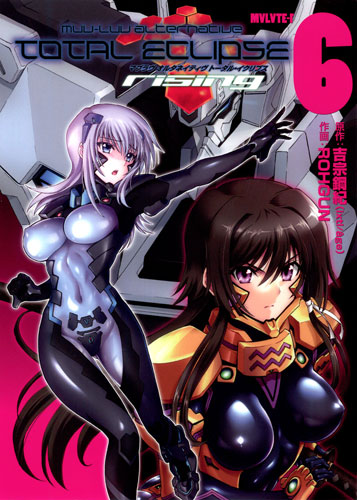
In their journey, a hero is not just tested physically but emotionally and mentally. As their journey continues, there are times when they will need a reminder, a reconnection to their purpose. When this time comes, their journey will turn inwards.
By following the structure of a Hero’s Journey, Muv-Luv: Alternative develops Takeru into an empathetic character, restoring his humanity and agency in the process. With Takeru starting his journey, we can now move onto the finale.
In the next article, I will delve deeper into how “humanity is restored” and the process through which Alternative’s war story becomes, once more, a story about love.
Recommended Post
A Retrospective Reading: Muv-Luv in 2019 Part 1
Recommended Post
A Retrospective Reading: Muv-Luv in 2019 Part 2
Recommended Post
A Retrospective Reading: Muv-Luv in 2019 Part 3
Recommended Post


